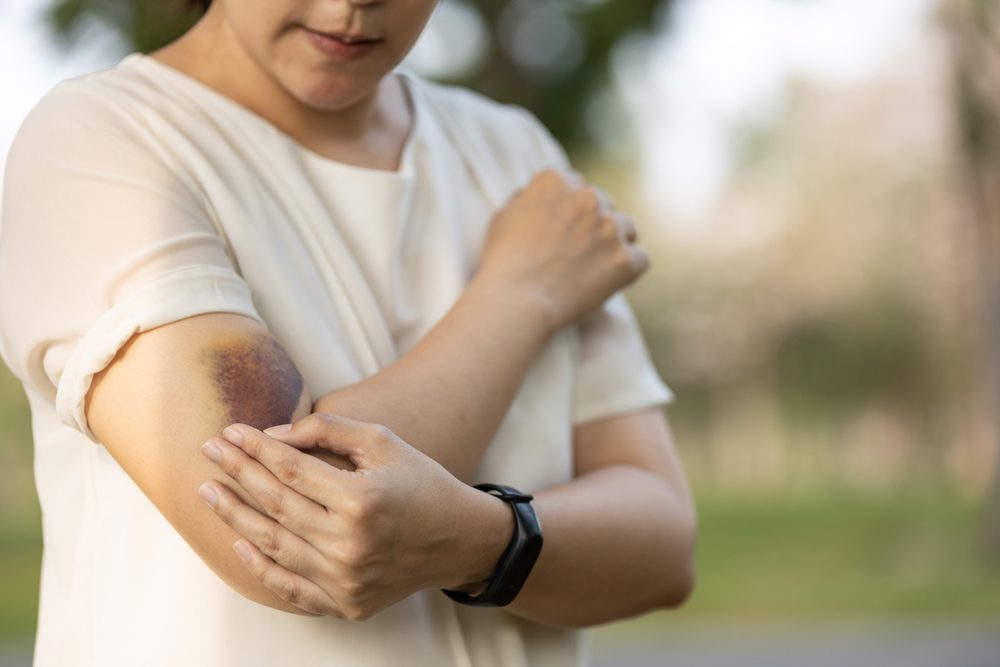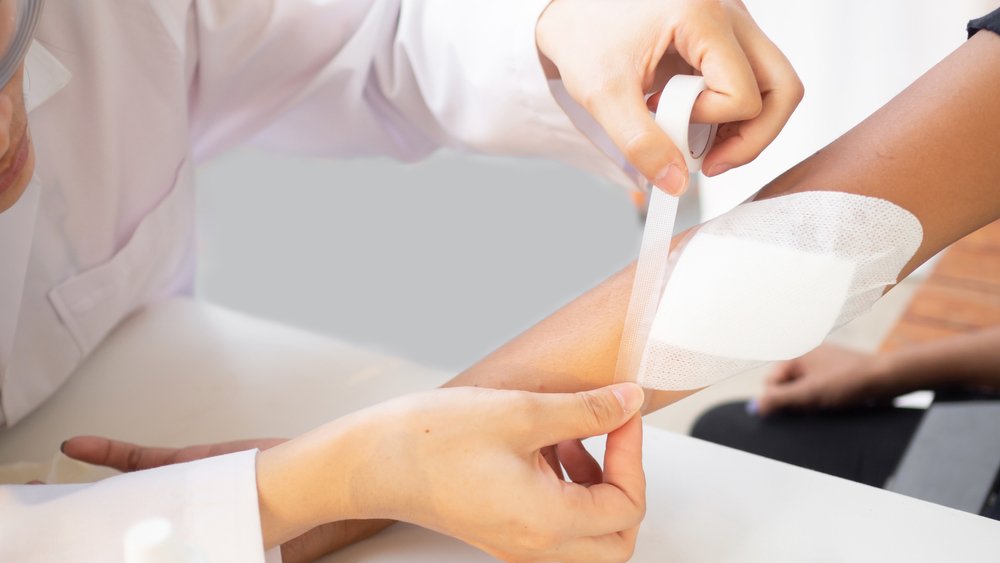 Car accidents can be such a jarring experience and can leave you with various injuries, some of which may not always appear right away. One example of a delayed injury is a bruised arm after a car accident, which might not seem like a big deal at first but could signal more severe underlying issues. Understanding when a bruised arm warrants concern after a car accident is important for ensuring prompt and appropriate medical attention. Let’s explore the potential causes of a bruised arm from a car accident, when emergency treatment is necessary, and how arm car accident injuries get diagnosed and treated.
Car accidents can be such a jarring experience and can leave you with various injuries, some of which may not always appear right away. One example of a delayed injury is a bruised arm after a car accident, which might not seem like a big deal at first but could signal more severe underlying issues. Understanding when a bruised arm warrants concern after a car accident is important for ensuring prompt and appropriate medical attention. Let’s explore the potential causes of a bruised arm from a car accident, when emergency treatment is necessary, and how arm car accident injuries get diagnosed and treated.
Causes of a Bruised Arm after a Car Accident
A bruised arm following a car accident can result from various factors. The impact of the collision can cause the body to forcefully collide with different surfaces within the vehicle, such as the steering wheel, dashboard, or door. This can lead to contusions or deep bruises on the arms as they absorb the force of the impact. Additionally, flying debris or objects within the vehicle can strike the arms, resulting in bruising.
Arm fractures, also known as broken bones, are unfortunate but common injuries in car accidents, particularly in cases where the arms are subjected to significant force or impact. Fractures can occur when the arms strike hard surfaces within the vehicle or sustain direct trauma from objects or debris. In addition to localized pain and swelling, fractures may also cause bruising around the affected area, as well as limited range of motion and deformity depending on the severity of the fracture.
Soft tissue injuries, including strains, sprains, and tears of the muscles, tendons, and ligaments in the arm, can also occur because of a car accident. Rapid acceleration, deceleration, or sudden changes in direction can place significant stress on the soft tissues of the arm, leading to injury. These injuries may present with symptoms such as pain, swelling, stiffness, and bruising.
Symptoms of a Bruised Arm
Identifying the symptoms of a bruised arm is essential for determining its severity and the appropriate course of action. Common symptoms include pain, tenderness, swelling, and discoloration of the skin in the affected area. In some cases, people may also experience reduced range of motion or difficulty moving the arm due to pain or stiffness. It’s crucial to monitor these symptoms closely to determine the extent of the injury.
When Is Emergency Treatment Necessary?
While bruising alone may not always require immediate medical attention, certain signs indicate a more serious underlying issue that requires prompt intervention. If the bruised arm is accompanied by severe pain, swelling that progressively worsens, numbness or tingling in the arm or hand, or difficulty moving the arm, it may indicate a more severe injury, such as a fracture or nerve damage. In these cases, seeking emergency medical treatment is important to prevent further complications and ensure proper car accident injury treatment.
Car Accident Treatment for a Bruised Arm
The expertise of Snellville car accident doctors near you can play a pivotal role in addressing injuries like a bruised arm. These doctors are trained to assess and treat a wide range of injuries commonly associated with motor vehicle collisions, including soft tissue injuries, fractures, and concussions. Through thorough evaluation and diagnostic testing, they can accurately diagnose the extent of the injury and develop a personalized treatment plan tailored to the individual’s needs.
Additionally, car accident doctors understand the complexities of insurance claims and legal processes associated with car accidents. They can provide comprehensive documentation of your injuries and treatment, which is beneficial for navigating the insurance claims process and making sure you receive the compensation you deserve for medical expenses and other damages. With expertise and dedication to patient care, car accident doctors can guide you through the recovery process with compassion and expertise.
Diagnostic Imaging Tools for Arm Injuries
 When you visit a car accident doctor about a bruised arm, they may want to use diagnostic imaging to get a better look at what’s going on underneath the skin. These diagnostic imaging tools play a crucial role in providing detailed insights into the extent and nature of the injury. Here are three commonly used imaging modalities: X-ray, CT scan, and MRI.
When you visit a car accident doctor about a bruised arm, they may want to use diagnostic imaging to get a better look at what’s going on underneath the skin. These diagnostic imaging tools play a crucial role in providing detailed insights into the extent and nature of the injury. Here are three commonly used imaging modalities: X-ray, CT scan, and MRI.
X-ray (Radiography)
X-ray imaging, also known as radiography, is a widely used diagnostic tool for assessing the potential for broken bones. An X-ray can reveal fractures by producing images of the bones, highlighting any breaks or misalignments. Additionally, X-rays can help identify foreign objects, such as metal fragments, that may be embedded in the soft tissues of the arm. X-rays are quick, non-invasive, and readily available in most medical facilities, which makes them an efficient tool for the initial evaluation of arm injuries after a car accident.
CT Scan (Computed Tomography)
Computed tomography, or a CT scan, utilizes an advanced type of X-ray technology to produce detailed cross-sectional images of the body’s internal structures. A CT scan can be especially useful for evaluating complex arm injuries that may involve multiple structures, such as bones, soft tissues, and blood vessels. They can provide comprehensive views of the arm from various angles, allowing for a more accurate assessment of fractures, joint dislocations, and soft tissue injuries.
MRI (Magnetic Resonance Imaging)
An MRI, or magnetic resonance imaging, uses a powerful magnetic field and radio waves to generate detailed images of the body’s internal structures, including bones, muscles, tendons, and ligaments. An MRI is helpful for evaluating soft tissue injuries and detecting abnormalities that may not be apparent on X-rays or CT scans. It can provide detailed views of the muscles, tendons, and ligaments surrounding the arm to detect what’s going on underneath a bruised arm after a car accident. Additionally, an MRI does not expose patients to radiation, making it a safe option for repeated imaging studies if necessary.
Diagnostic imaging plays a crucial role in the evaluation and diagnosis of arm injuries following a car accident. X-ray, CT scan, and MRI are valuable tools that provide detailed insights into the extent and nature of arm injuries, helping healthcare providers formulate appropriate treatment plans and facilitate optimal recovery for individuals involved in motor vehicle collisions.
AICA Snellville for Arm Pain and Injuries
If you have a bruised arm after a car accident, visit AICA Orthopedics for a quality Snellville car accident doctor near you. We have diagnostic imaging tools on-site, so you can receive a comprehensive evaluation and get started on a personalized treatment plan as soon as possible.
